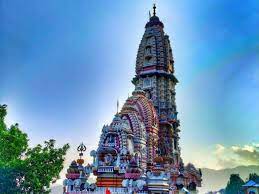FRESH WATER DESTINATIONS WORTH VISITING

Freshwater is a vital resource for life on Earth, and it sustains ecosystems, communities, and economies worldwide. Now is the time to reflect on the importance of preserving these freshwater sources while also exploring some of the most beautiful freshwater destinations around the globe. From sparkling lakes and meandering rivers to crystal-clear springs, these locations are stunning and provide essential ecological services that we must protect. Whether you’re an eco-conscious traveler or simply seeking to immerse yourself in the beauty of nature, here are some of the world’s most captivating freshwater destinations worth visiting.
1. THE AMAZON RIVER, BRAZIL
The Amazon River is the lifeblood of the Amazon Rainforest, one of the world’s most diverse and ecologically significant ecosystems. Spanning over 4,000 miles, this mighty river is the largest in terms of discharge and has the widest river basin in the world. Traveling along the Amazon River allows visitors to witness firsthand the breathtaking biodiversity of the rainforest, including exotic wildlife such as pink dolphins, jaguars, and various bird species.
The river is a source of freshwater for millions of people in South America, providing drinking water, transportation, and irrigation. However, it’s under increasing threat from deforestation, pollution, and climate change. For responsible travelers, supporting eco-tourism ventures that focus on conservation and sustainability can help preserve this vital waterway.
2. LAKE BAIKAL, RUSSIA
Located in Siberia, Lake Baikal is the world’s deepest and oldest freshwater lake, reaching depths of over 5,300 feet. It is estimated to be around 25 million years old and holds about 20% of the world’s unfrozen surface freshwater, making it a crucial global water resource. In addition to its staggering size and age, Lake Baikal is known for its pristine clarity and unique ecosystem, with more than 1,700 species of plants and animals, many of which are found nowhere else on Earth.
Traveling to Lake Baikal offers the chance to witness stunning landscapes, including snow-capped mountains, dense forests, and crystal-clear waters. The lake is a UNESCO World Heritage site, and efforts are underway to protect its fragile environment. Sustainable tourism that respects the local flora, fauna, and water resources is essential to maintaining the lake’s beauty and ecological balance.
3. THE GREAT LAKES, UNITED STATES AND CANADA
The Great Lakes, consisting of Lakes Superior, Michigan, Huron, Erie, and Ontario, form the largest freshwater system in the world by total area. Covering over 94,000 square miles, these lakes are home to diverse ecosystems and provide water to over 40 million people in both the United States and Canada. They are also a hub for recreational activities, from boating and fishing to hiking along their scenic shores.
Each lake has its unique charm. Lake Superior is known for its rugged coastline and crystal-clear waters, while Lake Michigan is famous for its sandy beaches. Lake Erie, though smaller, offers plenty of opportunities for birdwatching and enjoying outdoor activities. These lakes are also vital for the regional economy, and efforts are being made to protect them from pollution and invasive species. Eco-tourism in the Great Lakes region promotes sustainable practices that help preserve these precious water resources for future generations.
4. BLUE HOLE, BELIZE
Located in the heart of the Belize Barrier Reef, the Blue Hole is a mesmerizing underwater sinkhole that attracts divers and snorkelers from around the world. The hole is approximately 1,000 feet across and 400 feet deep, and its pristine blue waters are home to a variety of marine life, including nurse sharks, stingrays, and an array of colorful fish.
While the Blue Hole itself is an extraordinary sight to behold, it’s also a reminder of the importance of preserving our aquatic ecosystems. The surrounding coral reefs and marine environments are heavily reliant on the quality of the surrounding water. Tourists visiting the Blue Hole are encouraged to be environmentally conscious, ensuring they leave no trace and support sustainable tourism practices that protect both freshwater and marine ecosystems.
5. PLITVICE LAKES NATIONAL PARK, CROATIA
Plitvice Lakes National Park is one of Europe’s most famous natural attractions and a UNESCO World Heritage site. The park is known for its stunning series of interconnected lakes, waterfalls, and limestone formations. The waters in the park are a vivid turquoise, caused by the high mineral content and the presence of algae, which creates the park’s signature colors.
The Plitvice Lakes are fed by numerous freshwater springs and streams that flow through the park, creating a rich, biodiverse environment. Visitors can explore the park via boardwalks and hiking trails, taking in the breathtaking views of the cascading waterfalls and tranquil pools. As one of Croatia's most popular tourist destinations, Plitvice Lakes is committed to preserving its natural beauty through eco-friendly practices and sustainable tourism initiatives. The park is an excellent example of how responsible travel can support conservation efforts and help protect vital freshwater ecosystems.
6. LAKE TITICACA, BOLIVIA AND PERU
Lake Titicaca, straddling the border between Bolivia and Peru, is the largest freshwater lake in South America by volume and the highest navigable lake in the world, sitting at an elevation of over 12,500 feet. This sacred lake has long been a site of cultural and spiritual significance for indigenous peoples, including the Aymara and Quechua.
The lake is also home to a variety of unique wildlife, including species of birds, fish, and amphibians. Visitors can explore the lake by boat, visiting the floating islands made of reeds by the Uros people or experiencing the rich cultural heritage of the area. The region is an important freshwater resource for local communities, and visitors are encouraged to support sustainable tourism initiatives that protect both the lake and the surrounding ecosystem.
You may like post

FROM SACRIFICE TO RESURRECTION
Understanding Good Friday and Easter Sunday

HIDDEN INDIAN SITES WORTHY OF UNESCO
Exploring India’s Sites That Should Be on the UNESCO World Heritage List







